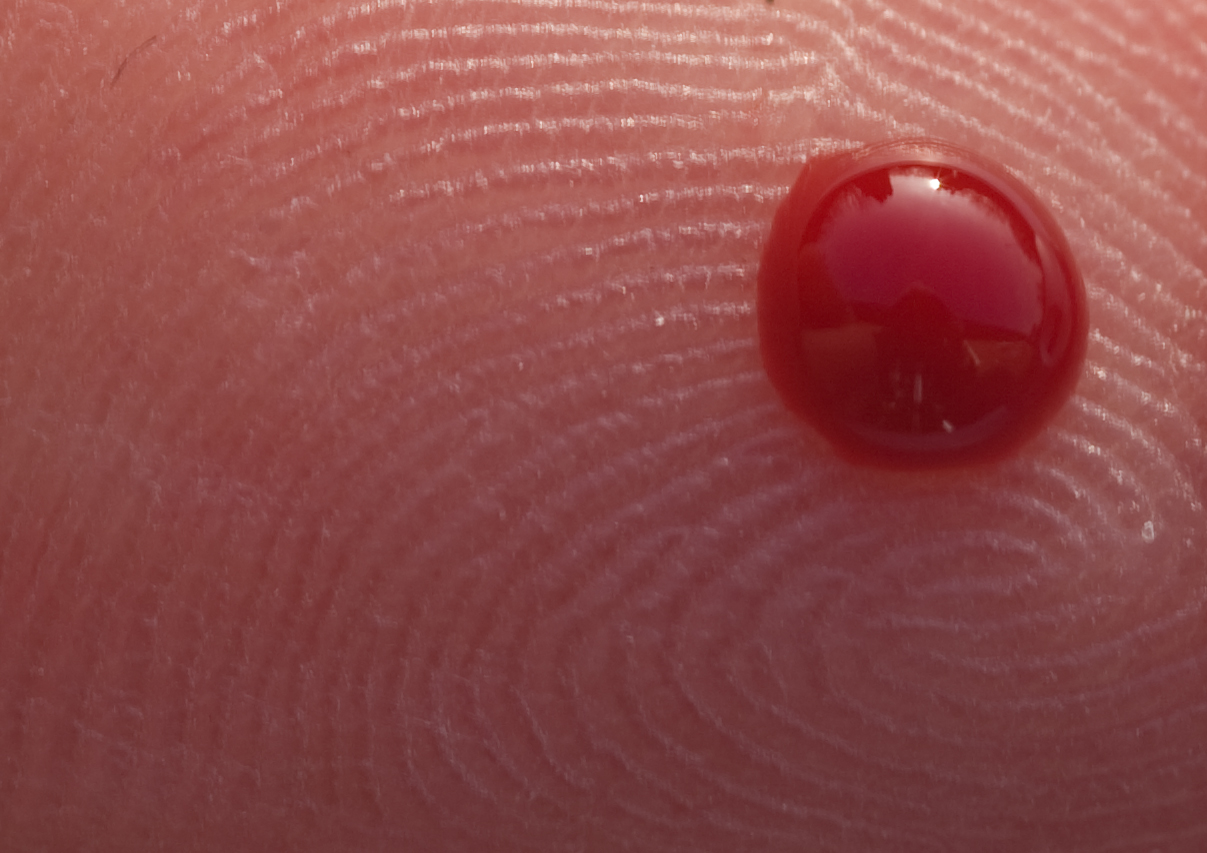Personalised Diagnostics
Interview with
Sequencing your DNA may be one way to provide better diagnostic tools but there are other methods and one such is by monitoring the blood of individuals. Dr Simon Goldman from Abcodia joins us in the studio to tell us about a project he's been working on called ROCA that enables early and reliable detection of ovarian cancer using an algorithm.
are other methods and one such is by monitoring the blood of individuals. Dr Simon Goldman from Abcodia joins us in the studio to tell us about a project he's been working on called ROCA that enables early and reliable detection of ovarian cancer using an algorithm.
Simon - It starts from a group at University College London who were looking at the main marker in the blood for ovarian cancer. It's been used for decades called CA125. This biomarker which indicates the presence of ovarian cancer has been used for a long time and isn't actually particularly very good at doing the job.
Kat - So, this is the molecule produced by the cancer cells and just kind of floats out into the blood around the body.
Simon - Correct. The problem with it is, it's actually produced in a lot of other conditions, not just in cancer. So, it's produced in say, endometriosis or in pregnancy as well.
Kat - Okay, you don't want to confuse ovarian cancer with pregnancy.
Simon - You certainly don't. So what happened was in the later 1990s, a group at UCL had a look at this particular protein and asked the question, "What happens if rather than just looking at this level, we'll look at it at the proteins level over time, because it may be that different people have different baseline levels and maybe that it's the change in level from their baseline that's more important than the absolute level in and of itself?"
Kat - So, who were you looking at to measure these level of change over time?
Simon - So, the trial that was started in the early 2000's had about 200,000 volunteers donated blood to participate in this trial to show that you could look at this over time. It's very important because on the basis of the test as stands just looking at the level, only around about 1 in 27 surgeries for ovarian cancer that was based on this test and on a subsequent ultrasound actually found a cancer. It's very traumatic for the people who get told that they've got ovarian cancer but also, it's a big burden on the health system. So, this trial started in the early 2000's and 200,000 women gave blood and about 50,000 of those gave blood every year for 10 years, and followed through that whole period in order to basically ask the question, what happens if we look at the level of this protein over time? Do changes in the level of that protein actually tell us something about ovarian cancer?
Kat - So, rather than saying, okay, you've got a level of 1, you've got a level of 4, it's about the rate of change over time. so, someone with an accelerated change in it, they may be more at risk than someone who kind of bumbles up and down in their level.
Simon - Correct and similarly, somebody else who might have a baseline level that is say, 4 - let's assume that that's above our cut-off - might actually be someone who doesn't have ovarian cancer. The level of the protein may just be going, sideways over that whole period. Really, what the algorithm that's come out of this whole trial is looking for is, as you say, those inflection points and trying to pick people up. Some of the people might have had baselines that were very, very low and they had a sudden increase, but they never reached the cut-off, so these people weren't even picked up.
Kat - And this is quite important when you think about cancer tests because it suggests particularly for a blood test, you can't just go right - you get your test when you're 50 and that's it, that you have to monitor people over, maybe their entire lifetime. Do you think that would be an idea?
Simon - Correct and I think we're already starting to do that with things like cholesterol testing. But then even something like cholesterol has never been looked at over a long period of time to say, do changes in the level of cholesterol then predict cardiovascular disease for example. More than half of the people who have a heart attack had perfectly normal cholesterol. So you wonder, does that really tell you something or should you be looking at it over time rather than just at a level?
Kat - I guess when you start looking in the general population, look at everyone, you'll find people who have cholesterol levels, like "crikey! That's quite high!" but actually, they'll never have a heart attack.
Simon - Correct and those people may have particular genetic predispositions for example to not have a heart attack. And so, the level of the cholesterol doesn't really give you very much information.
Kat - So, in terms of the algorithm you're using, where are we at the moment with maybe being able to apply this certainly in ovarian cancer?
Simon - The algorithm itself is being commercialised, probably will be available from about next year. At the moment, trial is still ongoing. They've stopped collecting the blood, kinda sad, sitting there, waiting for the last few cases of ovarian cancer to come through. Probably, sometime next year. But the principle can be similarly applied to any other disease. You've got a biobank sitting there with 200,000 women who got all of the diseases that you would have expected 200,000 women to get over that kind of period of time. So for example, you can look at proteins that are related to say, pancreatic cancer and you can see that these proteins are changing 2 to 3 to 4 years out from when it's currently being diagnosed and especially in a disease where from diagnosis, median survival is about 4 months, it's a terrible outcome. If we can pick up these changes much earlier, maybe we can intervene.
Kat - Pancreatic cancer is really critical because it's diagnosed so late and survival is so poor. One of the other cancers we hear about is prostate cancer. There's a blood test that's called PSA test that measures this protein called PSA in the blood, and that again has problems with its reliability. Guys might have a high level and not have cancer. Guys might have cancer and not have a high level. Is this again something similar? Obviously, the study that you've done has women rather than men in it...
Simon - True. We haven't yet found a prostate cancer case in our cohort.
Kat - That's lucky!
Simon - It's interesting if we do, but no, the principle is the same. And the key thing for here is an algorithm that not only compares an individual to their baseline, but once you've got a large cohort like that compares your profile to everybody else. In the case of PSA, I'm not sure that that's being done.
Kat - Yeah and I guess all this kind of work does highlight the fact that we are all unique. You can't just have a one-size-fits-all and even if we could put people into maybe buckets and say, "You're a high risk, you're a low risk, you need more monitoring, you need less monitoring" that's got to be able to save lives in the future.
Simon - And that's basically what the process is. You get a blood test over time, your screened effectively over time. If the level of say, CA125 rises, then a doctor is going to say, "Well look, your level is different from baseline. The algorithm suggests that you're at risk. Maybe you should go and have an ultrasound" and the intervention is accelerated and you can pick up cancer a lot earlier than you would otherwise pick it up.
Kat - Certainly sounds like this is something you're very excited about.
Simon - Indeed.
Kat - I reckon so. In terms of the - you say you've got 200 samples just sitting in a freezer there, are there plans to look at other types of cancer? You mentioned pancreatic there.
Simon - Absolutely. I mean, there's - in total - there's about 5 and a half million samples sitting in a fridge there. And the thing is, as I said before, you can look at a lot of other diseases - cardiovascular disease. Not all biomarkers are going to profile well, but in a lot of cases, no one has ever actually done the study because no one has had these kinds of cohorts over that kind of period of time to be able to do the studies.
- Previous Facial Recognition for Diagnoses
- Next How Genes Are Sequenced










Comments
Add a comment